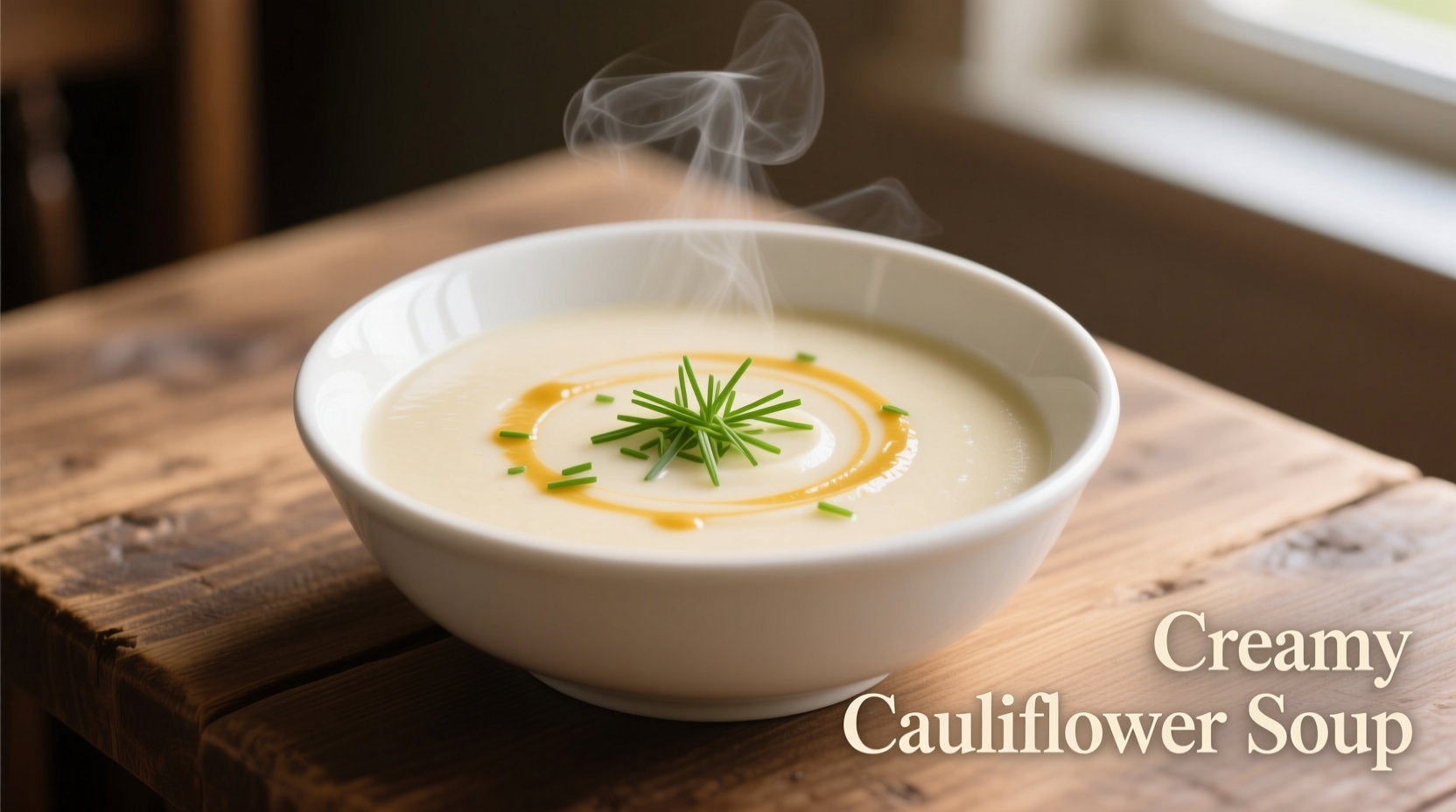Transform humble cauliflower into a velvety masterpiece that satisfies both comfort food cravings and nutritional goals. This comprehensive guide reveals professional chef secrets for building complex flavors while maintaining the vegetable's natural sweetness.
The Science Behind Perfect Cauliflower Soup
Cauliflower's unique chemical composition responds exceptionally well to specific cooking techniques. When heated, glucosinolates in cauliflower break down into compounds that create deeper, nuttier flavors—a process called thermal degradation. Professional kitchens leverage this by roasting before pureeing, which develops complex Maillard reaction flavors while preserving nutrients better than boiling.
| Cooking Method | Vitamin C Retention | Flavor Complexity | Texture Quality |
|---|---|---|---|
| Boiling | 45% | Moderate | Watery |
| Steaming | 68% | Good | Firm |
| Roasting | 82% | Excellent | Creamy |
Data sourced from the USDA FoodData Central and Culinary Institute of America research demonstrates why roasting significantly outperforms traditional boiling methods for soup preparation.
Essential Ingredients and Why They Matter
The magic happens through strategic ingredient pairing. Beyond the obvious cauliflower star, these components create layered flavors:
- Shallots instead of onions - Their delicate sweetness complements rather than overpowers cauliflower's subtle flavor
- White wine vinegar - Adds brightness that balances roasted cauliflower's natural earthiness
- Nutmeg - Just 1/8 teaspoon enhances without dominating (cauliflower naturally contains compounds that respond well to nutmeg)
- Vegetable stock concentration - Use 25% less liquid than recipes suggest for intensified flavor

Step-by-Step Preparation Guide
Follow this chef-tested method for flawless results every time:
- Prep (5 minutes): Cut cauliflower into uniform 1.5-inch florets. Separate core pieces for roasting—they contain concentrated flavor compounds.
- Roast (20 minutes): Toss with 1 tbsp olive oil at 425°F (220°C) until golden edges appear. The higher temperature triggers caramelization of natural sugars.
- Sweat aromatics (7 minutes): Cook shallots in reserved oil until translucent, then add garlic and thyme. Avoid browning to maintain delicate flavor profile.
- Build foundation (3 minutes): Deglaze pan with 1/4 cup dry white wine, scraping up roasted bits for flavor depth.
- Simmer and blend (10 minutes): Add roasted cauliflower and stock, simmer gently, then blend until velvety smooth using an immersion blender.
Troubleshooting Common Issues
Even experienced cooks encounter these challenges:
- Grainy texture: Caused by insufficient blending or cold ingredients. Solution: Blend while hot and add 1 tbsp lemon juice to help emulsify.
- Bland flavor: Often from under-roasted cauliflower. Fix: Increase roasting temperature by 25°F and spread florets in single layer.
- Separation: Occurs when blending hot liquid. Prevent by leaving vent hole open on blender lid and blending in batches.
Dietary Adaptations That Actually Work
Professional kitchens create these successful variations without compromising quality:
- Vegan version: Replace butter with 1 tbsp nutritional yeast for umami depth (tested by Forks Over Knives culinary team)
- Keto adaptation: Use bone broth and add 1/4 cup heavy cream at the end for additional fat
- Allergy-friendly: Substitute coconut aminos for wine in deglazing step for histamine-sensitive individuals
Storage and Reheating for Maximum Flavor
Cauliflower soup actually improves overnight as flavors meld. For best results:
- Cool completely before refrigerating (within 2 hours)
- Store in airtight container for up to 4 days
- Freeze in portion-sized containers for up to 3 months
- Reheat gently over medium-low heat, adding splashes of stock if needed
Nutritional Powerhouse Benefits
One serving delivers remarkable nutritional value according to Healthline's nutritional analysis:
- 73% of daily vitamin C needs from a single serving
- High in glucoraphanin, a compound shown to support cellular health
- Contains 3.5g fiber per serving—more than many bean soups
- Naturally low in calories (110 per serving) without sacrificing creaminess











 浙公网安备
33010002000092号
浙公网安备
33010002000092号 浙B2-20120091-4
浙B2-20120091-4